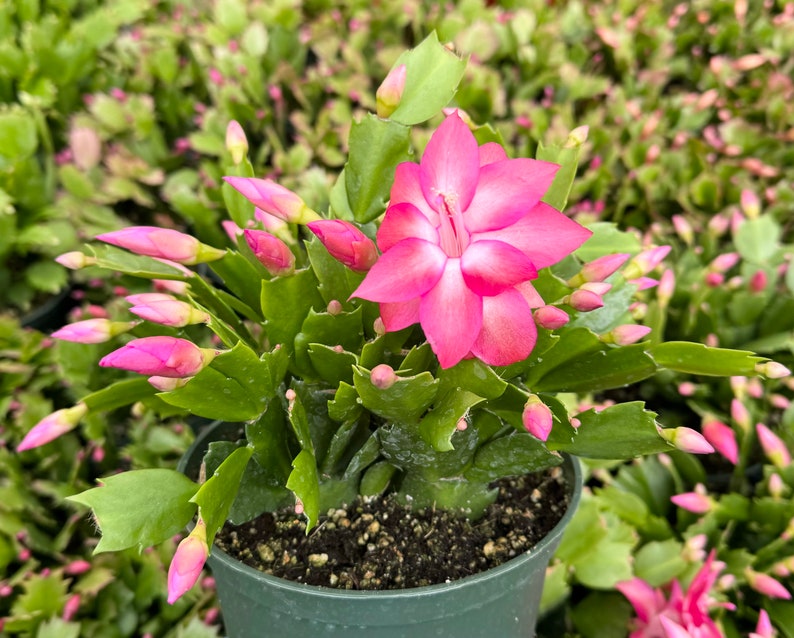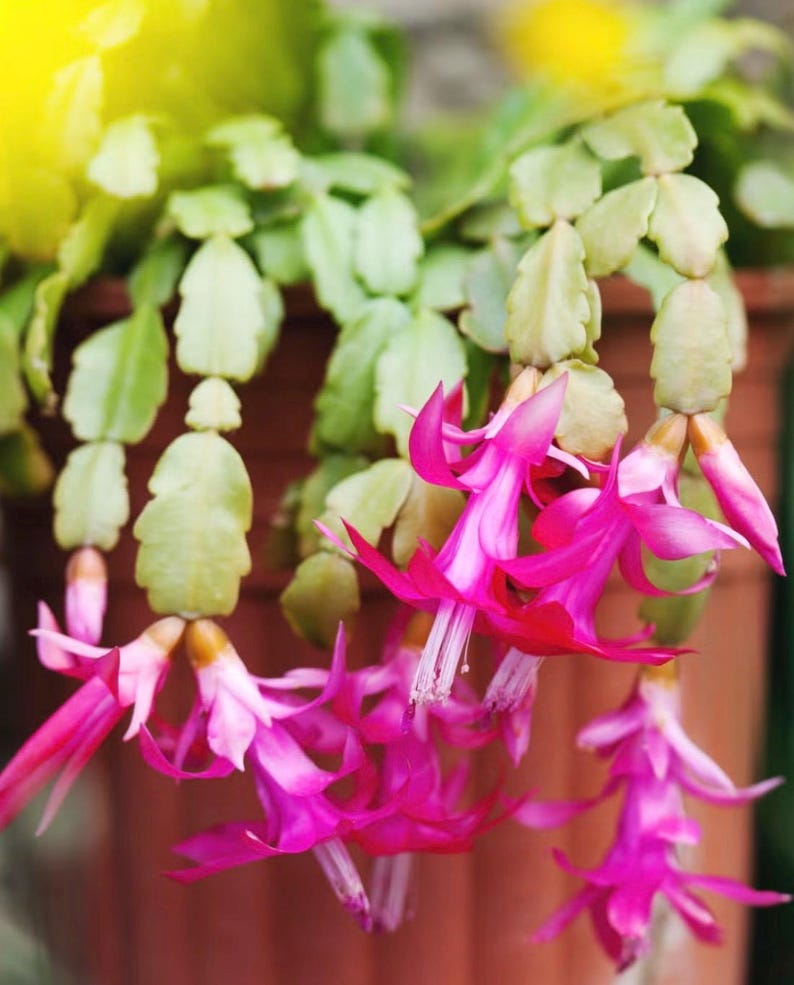
Bloom All Year: Essential Christmas Cactus Care Tips for Plant Lovers
Share

Your Christmas cactus just stole the spotlight this holiday season—blooming like a superstar 🌸✨. But now that the confetti’s settled, it might look a little tired… or “over-celebrated.” Don’t worry! With a little post-holiday TLC, your festive friend can bounce back and dazzle again next season. Here’s how to keep your Christmas cactus thriving after the holidays.
1. Light & Temperature: Cozy, Not Crispy ☀️🌿
Christmas cacti aren’t sun worshippers—they prefer a chill vibe.
-
Bright, indirect light is perfect. Direct sun can scorch leaves.
-
Keep the temperature between 60–70°F. Avoid drafts or cold windows.
Think of it as giving your cactus a comfy winter retreat.
2. Watering: Less Is More 💧
Post-bloom, your cactus enters rest mode. Overwatering is like offering espresso to someone trying to nap.
-
Water only when the top 1–2 inches of soil are dry.
-
Use room-temperature water and ensure proper drainage to prevent root rot.
3. Humidity: Winter’s Secret Ingredient 💨🌵
Dry winter air can sap your cactus’s energy.
-
Place a shallow tray of water with pebbles nearby or use a small humidifier.
-
Your cactus will thank you with healthy leaves and strong blooms next season.
4. Fertilizing: Keep It Light 🍃
After its marathon bloom, your cactus doesn’t need a feast.
-
Fertilize sparingly with a diluted balanced houseplant fertilizer once a month.
-
Resume regular feeding in late spring to encourage new growth.

5. Pruning & Repotting: Trim and Refresh ✂️🏡
-
Remove spent blooms and leggy growth to keep your cactus looking full.
-
Repot only if the plant is root-bound or the soil is tired, using a well-draining cactus mix.
6. Prep for Next Year’s Show 🌟
By early spring, new growth will appear. To encourage blooms for next holiday season:
-
Around September, give your cactus 12–14 hours of darkness for six weeks.
-
It may sound dramatic, but this rest period works wonders.
Looking for ways to complement your Christmas cactus with festive décor? Check out our Holiday Ornaments Collection and add charm to your home this season. For more plant-friendly décor tips, browse our Decor Inspiration Blog to make your holiday space truly magical. 🎄✨

✨ At Tree Treasures, we know Christmas is more than decorations—it’s about creating lasting memories, nurturing traditions, and spreading joy. Explore our blog for festive décor tips, plant care advice, and creative ideas to make your holiday season truly magical 🌿🎄.
